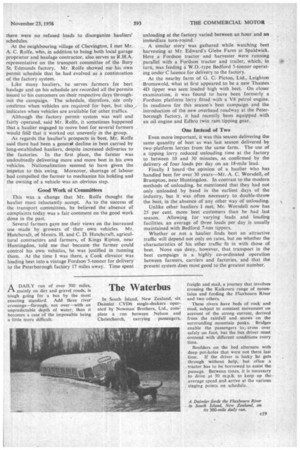The Waterbus
Page 59

If you've noticed an error in this article please click here to report it so we can fix it.
A DAILY run of over 300 miles, 1-1 mainly on dirt and gravel roads, is tough going for a bus by the most exacting standard. Add three river crossings—through, not over--with an unpredictable depth of water; then it becomes a case of the impossible being a little more difficult. In South Island, New Zealand, six Daimler CVD6 single-deckers operated by NewmanBrothers, Ltd., coin: plete a run between Nelson and Christchurch, carrying passengers,
freight and mail, a journey that involves crossing the Kaikoura range of mountains and fording the Flaxbourn River and two others.
These rivers have beds of rock and mud, subject to constant movement on account of the strong current, derived from the rainfall and snows on the surrounding mountain peaks. Bridges enable the passengers to, cross over safely on foot, but the bus driver must contend with different conditions every time.
Boulders on the bed alternate with deep pot-holes that were not there last time. If the driver is lucky he gets through without help, but often a tractor has to be borrowed to assist the passage. Between times, it is necessary to drive at 50 m.p.h. to keep up the average speed and arrive at the various staging points on schedule.
















































































































